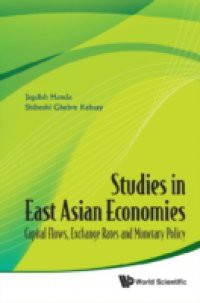This book includes three economic/econometric studies on four East Asian countries (Indonesia, Malaysia, Philippines and Thailand) and two studies on China. The four East Asian economies, designated at one time as ‘economic tigers’, provide important and interesting case studies on periods of very rapid growth with heavy capital inflows, followed by financial and economic crises. The three studies on these countries examine the impact of heavy capital inflows on growth, real exchange rates and the conduct of domestic monetary policy during the period 1970–96, which immediately preceded their financial crises of 1997–98. At a more general level, they shed light on the contributions that capital inflows make to small open economies and how these inflows impact on their exchange rates and monetary policies.The two studies on China examine the adequacy of capital flows to it and its monetary policies. In recent years, while China has been among the biggest recipients of capital inflows, our study on it finds that these inflows are still considerably short of the amounts that perfect capital flows would imply. Regarding China's pursuit of monetary policy, our study is the first one to question whether interest rates or monetary aggregates are appropriate instruments for the control of the economy. Our finding is that its large informal sector and black money holdings make the use of monetary aggregates the more appropriate policy instrument. This finding contrasts with the usual one for financially developed economies that interest rate targeting and a Taylor rule provide the applicable monetary policy framework.Contents:Capital Inflows and Growth: Evidence from Pre-Crises ASEAN Economies (Shibeshi Ghebre Kahsay and Jagdish Handa)Capital Flows and Real Exchange Rate Behavior: Evidence from Pre-Crises ASEAN Economies (Shibeshi Ghebre Kahsay and Jagdish Handa)Capital Flows and Monetary Policy: Evidence from Pre-Crises ASEAN Economies (Shibeshi Ghebre Kahsay and Jagdish Handa)Assessing International Capital Mobility: Evidence from China (Jagdish Handa, Jie Lin and Helei Wang)Optimal Monetary Policy Instruments and Rules: Evidence from China (Shen Guo, Shengzu Wang and Jagdish Handa)Readership: Graduate students, policy makers and researchers in developmental economics, SEA economies, monetary policy, capital flows and their impact on growth.

